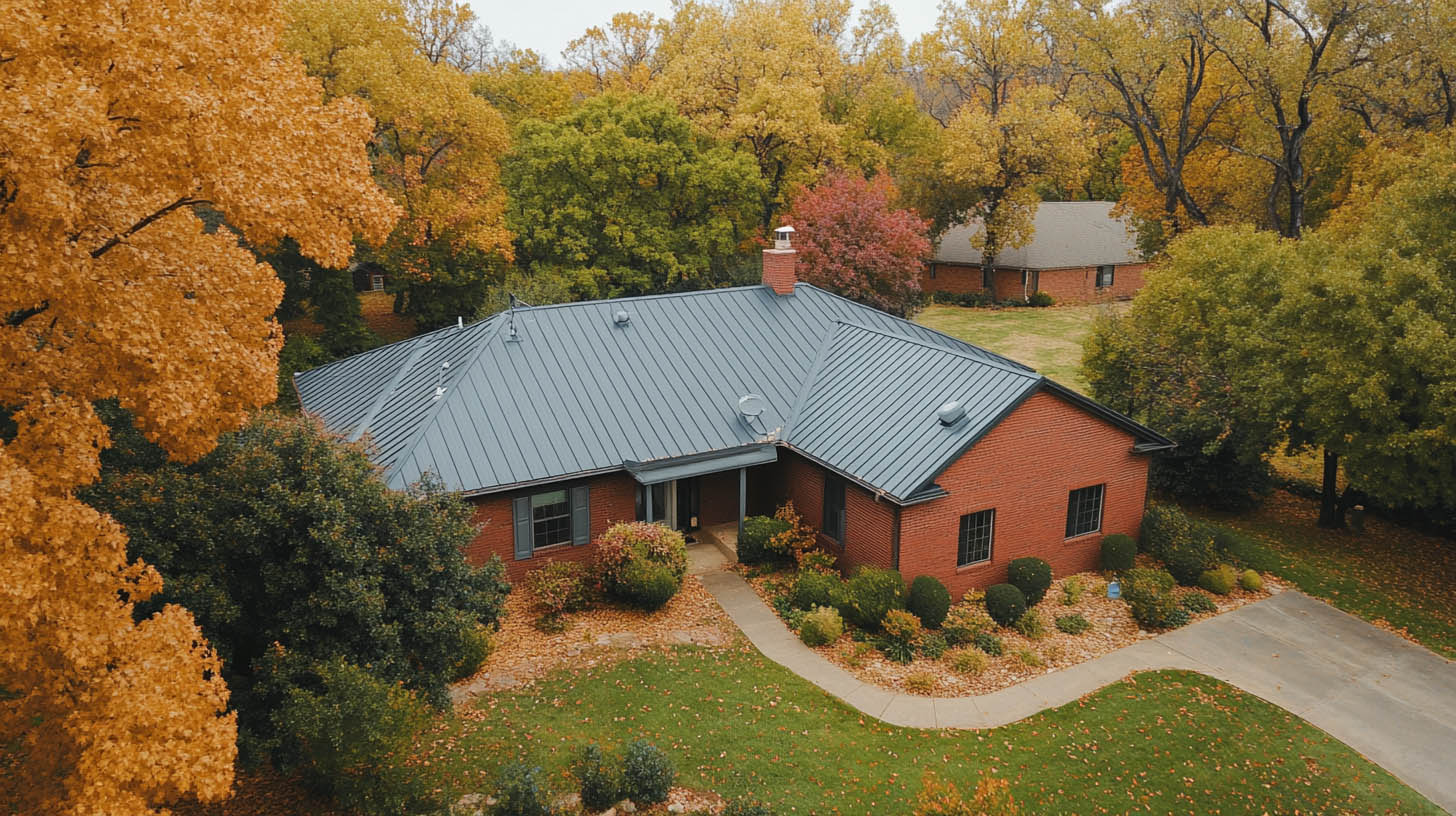
Rainstoppers Roofing offers expertise in durable and energy-efficient metal roofing systems. Metal roofs have grown in popularity due to their longevity, sustainability, and visual appeal, making them a smart investment for homeowners.
Benefits of Metal Roofs for Homeowners
1. Exceptional Longevity
Unlike asphalt shingles, which may need replacement every 20–25 years, metal roofs can last 50 years or more with proper care. They withstand harsh weather conditions, including heavy rain, snow, and wind, without degrading.
Key Fact: Metal roofs have a 60-year average lifespan, making them one of the most durable roofing options available.
2. Energy Efficiency and Savings
Metal roofs reflect sunlight, significantly reducing heat absorption and lowering cooling costs. This energy efficiency benefits homeowners year-round.
- Cool metal roofing reduces cooling costs by up to 25%.
- Proper insulation beneath metal roofs further enhances energy savings.
3. Environmentally Friendly
Metal roofing is 100% recyclable, unlike asphalt shingles that often end up in landfills. Many metal roofs are made from 25–95% recycled materials, making them a sustainable choice.
Types of Metal Roofing Systems
Standing Seam Metal Roofs
This premium option features raised seams where panels connect, preventing water infiltration. Standing seam roofs are ideal for durability and modern aesthetics.
Metal Shingles
Metal shingles mimic traditional materials like slate, tile, or wood while offering superior durability and fire resistance.
Corrugated Metal Panels
Corrugated panels are cost-effective, lightweight, and perfect for areas with heavy rain or snow due to their enhanced drainage capabilities.
Key Installation Steps for a Metal Roof
1. Roof Inspection and Preparation
Before installation begins, the existing roof structure is assessed for stability. In some cases, a metal roof can be installed directly over shingles, saving time and costs.
2. Underlayment Installation
A moisture-resistant underlayment acts as a barrier between the roof decking and the metal panels. Synthetic underlayments are preferred for their durability.
3. Flashing Installation
Flashing is installed around roof penetrations (vents, chimneys, and skylights) to prevent water leaks. Proper flashing is crucial for a watertight seal.
4. Metal Panel Installation
Metal panels are fastened securely, starting from the eaves and working upward. Proper overlap ensures protection from water penetration.
5. Ridge Cap Placement
The ridge cap seals the roof’s peak, preventing water entry while maintaining a polished finish.
Cost Factors of Metal Roof Installation
Several factors influence the overall cost of a metal roof installation:
- Material: Steel, aluminum, and copper vary in price.
- Roof Size and Complexity: Larger or more intricate roofs require additional labor and materials.
- Labor Costs: Professional installation ensures durability and eliminates costly errors.
While metal roofs have a higher upfront cost compared to traditional asphalt, they offer long-term savings through reduced maintenance and energy bills.
Common Concerns About Metal Roofs
Can Metal Roofs Withstand Extreme Weather?
Yes. Metal roofs excel in withstanding high winds, heavy snow, and hail. Proper installation ensures their resistance to severe weather conditions.
Are Metal Roofs Noisy During Rain?
When installed with appropriate insulation and underlayment, metal roofs are no noisier than other materials.
Do Metal Roofs Require Special Maintenance?
Metal roofs are low maintenance but benefit from periodic inspections to ensure fasteners, panels, and flashing remain secure.
Why Professional Installation Matters
A professional roofing contractor ensures:
- Correct installation for maximum lifespan.
- Compliance with safety codes and manufacturer guidelines.
- Use of high-quality materials and precision techniques.
At Rainstoppers Roofing, certified experts provide seamless installations backed by warranties for long-term peace of mind.
FAQs
1. How long does a metal roof last?
Metal roofs can last 50–70 years with proper maintenance.
2. Can metal roofs improve energy efficiency?
Yes, reflective surfaces reduce heat absorption, lowering cooling costs by up to 25%.
3. Can a metal roof be installed over existing shingles?
Yes, if the shingles are in good condition and the structure supports the added weight.
4. Are metal roofs fire-resistant?
Absolutely. Metal roofing is non-combustible, making it one of the most fire-resistant options.
5. What is the cost of installing a metal roof?
Costs vary based on material, roof size, and complexity but offer excellent long-term value due to durability and savings.
Conclusion
Metal roof installation is an investment that delivers unmatched durability, energy efficiency, and environmental benefits. By choosing professional installation, homeowners ensure their roof performs optimally for decades. Whether upgrading an existing structure or planning a new project, a metal roof is a reliable, long-term solution.
Contact Rainstoppers Roofing for a consultation and expert installation tailored to your home’s needs.If you want to read a blog about 5 signs you need a new roof installation, click here.
